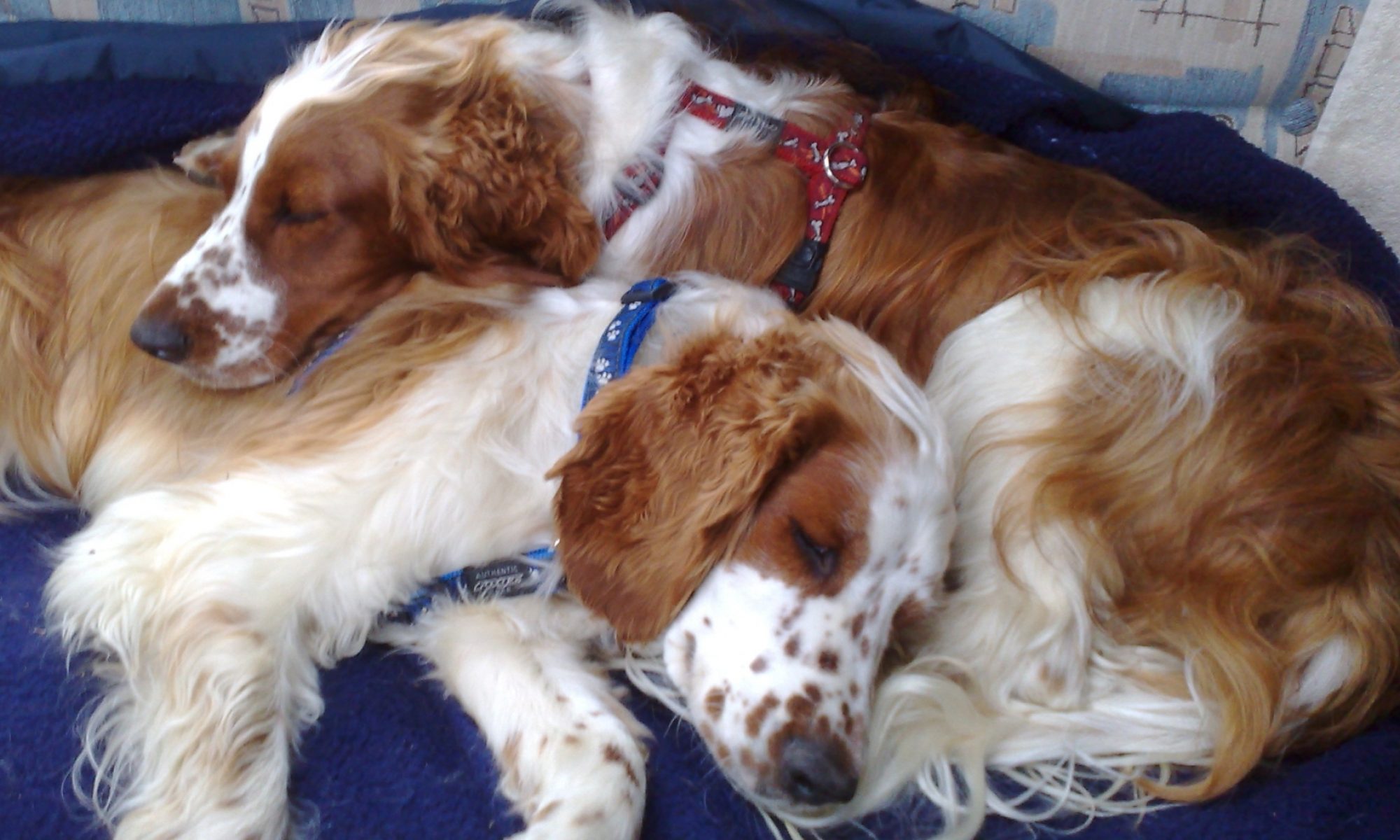Main Systems of the Canine Body
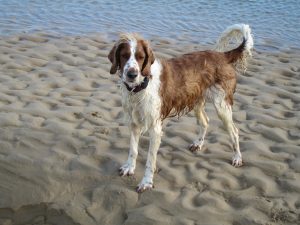
The main systems of the canine body are:
Circulatory - Cardiovascular and Lymphatic
Digestive / Excretory
Endocrine
Immune
Integumentary / Exocrine
Musculoskeletal - Muscles and Skeletal
Nervous
Respiratory
Urogenital - Urinary & Reproductive
Organs can partake in more than one system, but they have a natural home within their primary system.
Circulatory System - Cardiovascular and Lymphatic
The circulatory system consists of cardiovascular and lymphatic divisions.
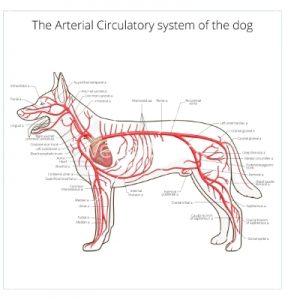
The cardiovascular division transports materials within the body and includes the heart, blood and blood vessels. Blood contains nutrients and oxygen to provide energy to allow the cells of the body to perform work.
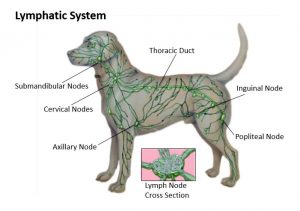
The lymphatic division helps maintain fluid balance and aids in defending against infectious diseases. The lymphatic system includes the lymph glands and vessels, and the spleen, thymus and tonsils.
Digestive / Excretory System
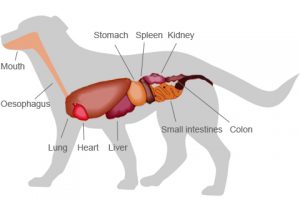
The mouth, oesophagus, stomach and bowels make up the digestive system. These structures and organs enable the body to take in and digest food, and asborb nutrients into the bloodstream for use by the body. The salivary glands, liver, gallbladder and pancreas facilitate these processes by releasing digestive juices into the digestive system.
Endocrine System
The endocrine system consists of a network of glands that release hormones to regulate various body functions.
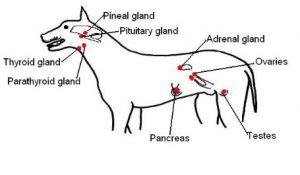
The system controls growth, metabolism and sexual development and function. Components of this system include the endocrine pancreas, testes and ovaries, and the pituitary, adrenal, thyroid, parathyroid an pineal glands. The pituitary gland is called "the master gland" as it provides more kinds of hormones than any other gland. Pituitary hormones control the hormone release from other endocrine glands, including the thyroid, parathyroid, adrenal, ovaries, testicles and pancreas.
Once produced, hormones enter the bloodstream and most (other than prostaglandin) produce an effect elsewhere in the body. Not all cells within the body are affected by hormones, and only some cells of a particular organ may respond to a specific hormone. Some hormones control the release of other hormones.
Immune System
The immune system protects the body against harmful organisms, such as bacteria, viruses and parasites. The immune system includes the lymph nodes and an array of specialized cells that patrol the body organs and tissues and fight invading germs. Immune cells produce many types of specialized proteins that aid in the protective function of this system.
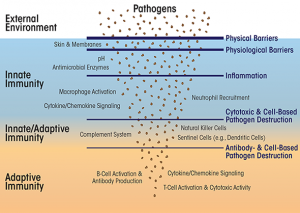
The immune system can be divided into two parts based on how specific their functions are - the innate immune system and the adaptive immune system.
For dogs, the innate immune system is their skin, stomach acid, mucous in the respiratory system and special chemicals in saliva.. This is the first line of defence, it is nonspecific and non adaptive.
The adaptive immune system defends the body against specific foreign invaders, designing different tactics for different invaders. The parts of the adaptive system communicate with each other and develop a memory of the various invaders they encounter.
If the invader is stopped by the innate system then no disease will occur. Otherwise the adaptive system is activated - if successful, the body will recover.
Integumentary / Exocrine System
The integument describes the outer covering of the body, which provides protection and acts as the first line of defense against the environment and germs.
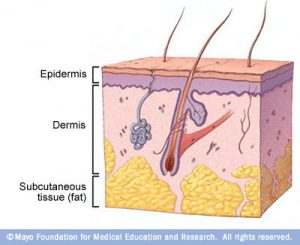
The integumentary system includes the skin, hair, claws, footpads, and sebaceous, sweat and mammary glands. The skin, hair, claws and footpads are largely protective against external factors from the environment, fluid loss and the entry of harmful substances and invading microorganisms. Sweat glands help control the body temperature and assist with waste excretion. Sebaceous glands help keep the skin moist. Additionally, nerve receptors in the skin provide information about touch, heat, cold and pain.
Musculoskeletal System - Muscular and Skeletal
The bones, cartilage, ligaments and muscles of the musculoskeletal system give the body shape and support, and enable voluntary movement. In addition to protecting internal organs, bones serve as attachment points for the muscles and tendons, produce blood cells, and act as calcium and phosphorus storage banks.
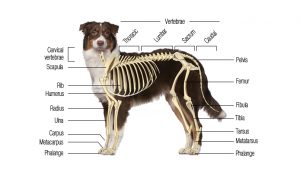
Bones provide a framework to support the body and protect the soft organs, and they also provide a system of levers used in locomotion (muscular action).
Additionally, bones produce red blood cells (hematopoiesis) and several kinds of white blood cells. In the normal adult dog they also store fat. They also act as a store for calcium and phosphorus, and many other elements.
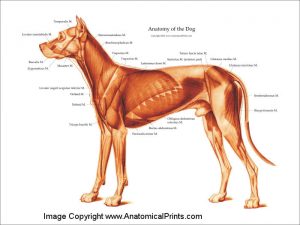
Muscles are responsible for posture and movement, facilitating movement of the bones but also providing stability to the joints of the body.
Skeletal muscles are attached to 2 different bones, stretching between them, and are attached by tendons. Every bone in the dog has at least one muscle attached.
Muscles only work in one direction - they contract. Paired muscles on either side of the bone contract alternately, which results in movement.
Without muscles, bones would not move in a controlled way, and without bones the muscles would have no structure.
Nervous System
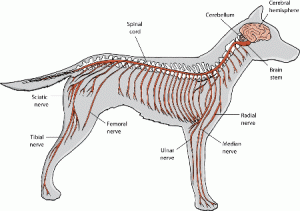
The nervous system includes the brain, spinal cord, nerves and sense organs, such as the eyes and ears. This system receives, transmits and integrates information from inside and outside the body. The brain and spinal cord form the central nervous system, while the peripheral division of the nervous system includes sensory organs and all the nerves that connect the spinal cord to the rest of the body.
Many different types of diseases can affect the nervous system, including birth defects, infections, inflammatory conditions, poisoning, metabolic disorders, nutritional disorders, injuries, degenerative diseases, or cancer. Neurologic diseases are often more common in a particular breed or sex, or tend to occur at a certain age.
Respiratory System
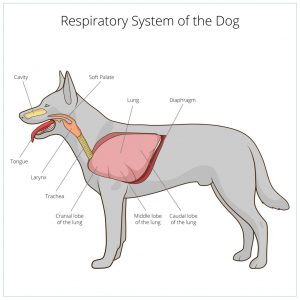
The respiratory system begins at the nose and includes the upper airway and lungs. This system enables gas exchange between the blood and the body's external environment. Specifically, the respiratory system takes in oxygen from the air and expels other gases such as carbon dioxide, which is a byproduct of cellular metabolism.
Because dogs do not sweat through the skin, the respiratory system also plays an important role in regulation of temperature.
Urogenital System - Urinary & Reproductive
The urogenital system includes the reproductive organs and urinary system.
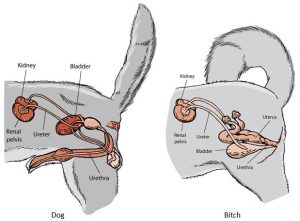
In the urinary system, the kidneys, bladder and their associated ducts enable removal of excess water, metabolic waste and unneeded substances from the body, eliminating them as urine.
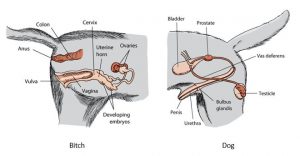
The testes, ovaries and their associated structures enable reproduction.
